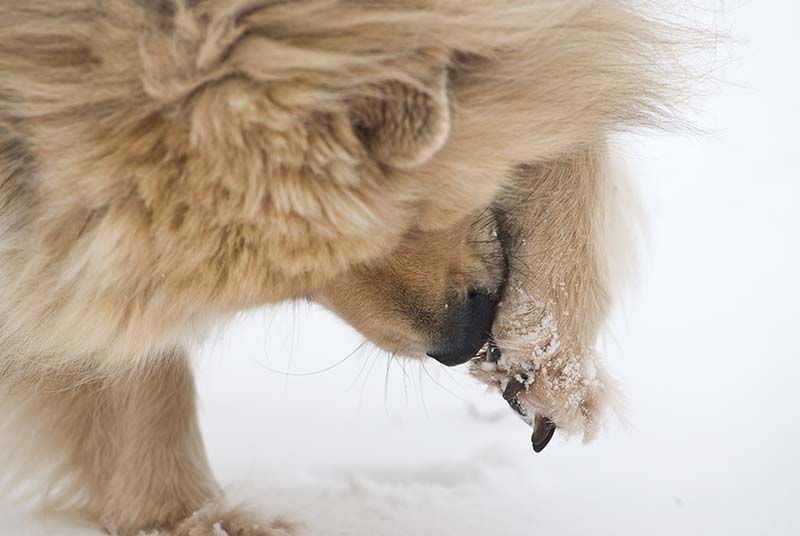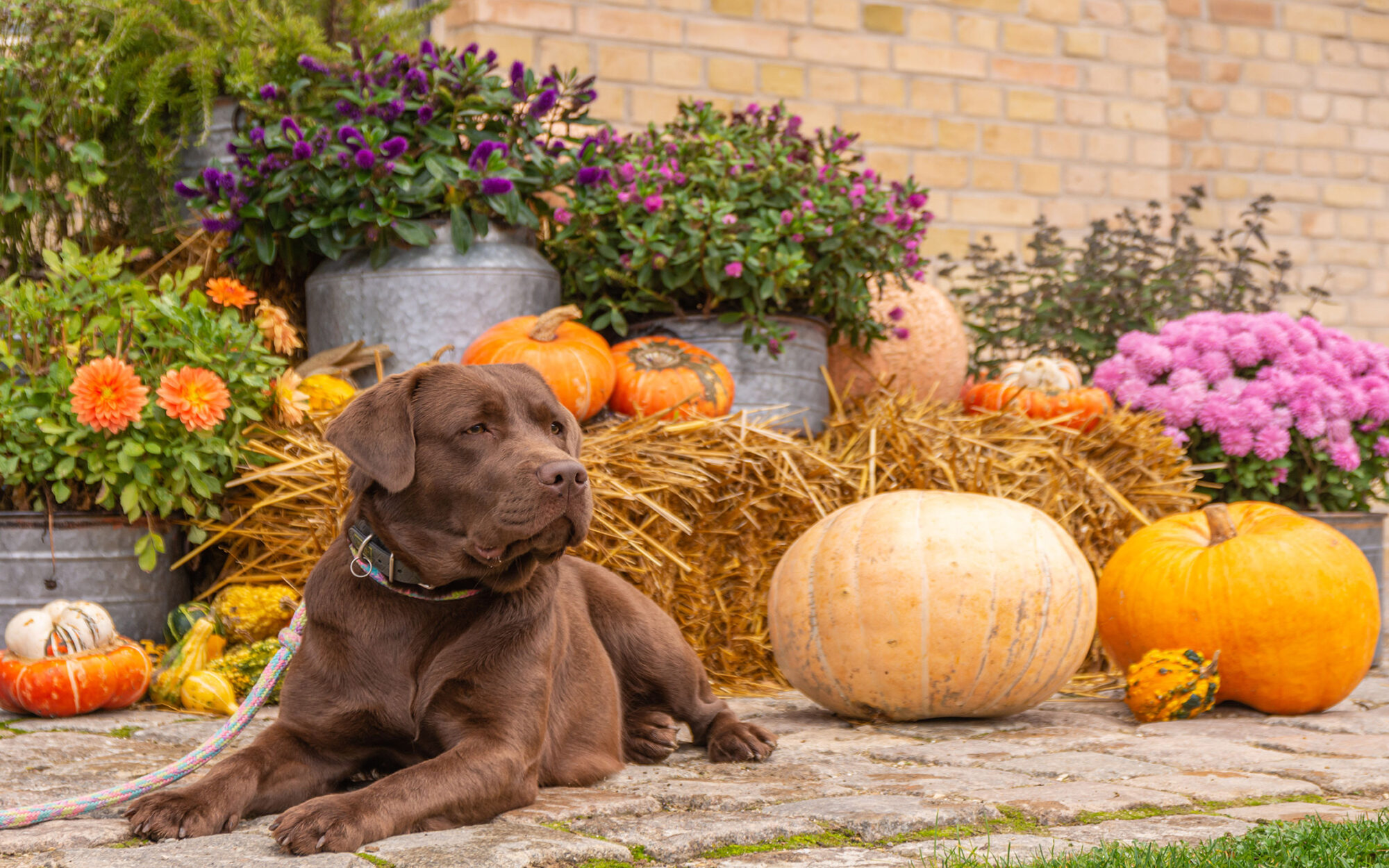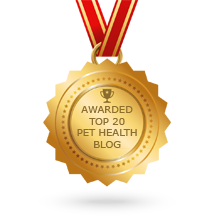Posts in Category: Seasonal Pet Care
Cozy Toes: The Principles of Winter Paw Protection

Our pets rely on their paws to transport them everywhere they need to go and in all types of weather, and it is easy to assume that their paws can withstand whatever Mother Nature throws at them. Unfortunately, cracked pads, frostbite, chemical burns, and more present numerous hazards to the well-being of our pet’s paws, especially, this time of year. With this in mind, the team at Lone Tree Veterinary Medical Center would like to walk you through the basics of winter paw protection for your furry loved one!
Adorable Anatomy
Paw pads are some of the cutest parts of any pet, but they also serve many important functions. Pads provide cushioning and shock absorption by protecting the ligaments, tendons, and bones from the impact of walking and running. They also provide insulation from hot and cold surfaces, as well as traction when a pet traverses across varying types of terrain. Paw pads also protect against bacteria, parasites, and other nasty contaminants present on any surface or terrain they come in contact with.
As a pet matures, the surface of the pads will become more tolerant to heat, cold, and rough surfaces. That doesn’t mean, however, that they don’t need some additional protection. Their paws remain vulnerable to the damage caused by extreme cold, ice, and chemical de-icers.
Continue…Thanksgiving Foods: Can Your Pet Eat That?

With Thanksgiving almost here, our tables will soon overflow with delicious food. While your pet’s cute face will certainly tempt you into sharing, it’s crucial to remember that many popular human dishes are not safe or healthy for them. Knowing what they can and can’t eat—like whether dogs can eat stuffing or if cats can have pumpkin—will help you resist the urge.
To ensure a safe celebration for everyone this holiday, and to avoid a trip to the emergency room, we’ve compiled a clear list of Thanksgiving foods to skip and the healthy options you can safely share with your pet.
Thanksgiving Foods To Avoid
The items below are Thanksgiving foods that will cause more harm than good for your cats and dogs. To keep them healthy, ensure these dishes are inaccessible. And remember: You aren’t the only one feeding your pet! Please inform your family and dinner guests about these dangerous or toxic foods to prevent well-meaning but risky table scraps.
Turkey Bones
Never share leftover bones. Bones can easily cause choking or splinter and puncture the intestines, necessitating emergency veterinary care.
Fatty Foods
Fatty foods such as turkey skin, ham, bacon, dark meat, rich sauces and mashed potatoes must be avoided. They are too rich and can trigger painful digestive issues like pancreatitis in your pet.
Onions, Garlic, Shallots, Leeks & Chives
Onions, garlic, shallots, leeks and chives are highly toxic to both dogs and cats. Ingestion can cause immediate damage to your pet’s red blood cells. While small amounts might not show immediate symptoms, large doses or chronic exposure can lead to severe, life-threatening anemia.
Unbaked Yeast Dough
Keep all raw dough completely out of reach. If ingested, it creates a dual emergency: The dough can expand dramatically inside your pet’s stomach, causing a dangerous blockage and severe bloating. Simultaneously, the active yeast ferments and produces alcohol, leading to the rapid onset of alcohol poisoning.
Grapes/Raisins
Grapes and raisins are highly toxic to pets, especially dogs. Even a very small amount can trigger potentially fatal and irreversible kidney failure. Always keep fruit salads and baked goods containing these ingredients strictly out of reach.
Macadamia Nuts
Macadamia nuts are highly toxic to dogs. Ingestion can cause painful symptoms, including weakness, tremors, vomiting, and overheating.
Chocolate
Chocolate is an absolute no-go for pets, even during the holidays. It contains the stimulant theobromine, which is poisonous to both dogs and cats. Be aware that the danger level directly relates to the color: darker chocolate (baker’s or dark cocoa) contains higher concentrations of theobromine and is therefore much more dangerous than milk chocolate.
Xylitol
Xylitol is an ingredient that is extremely toxic and potentially fatal to dogs, and it is hidden in an increasing number of household items. Since even small amounts can cause a rapid, dangerous drop in blood sugar and liver failure, you must always check the ingredient label on anything your pet might chew or consume.
To complicate safety, manufacturers often use other names for Xylitol on product labels. Be vigilant and watch out for these aliases:
- Birch sugar
- Birch bark extract
- Birch sap
- Sugar alcohol
Thanksgiving Foods To Share…In Moderation
While the “danger list” is long, the good news is that your pet doesn’t have to miss out entirely! In fact, there are still several foods your dog or cat can enjoy this Thanksgiving (in moderation). Here are some examples:
Turkey Meat
Plain, cooked turkey meat is safe for both cats and dogs. Just ensure you only offer a small piece of white meat that is completely unseasoned and free of all fat.
Pure Canned Pumpkin
While the pie filling is unhealthy, plain, canned pumpkin is actually great for pets. A little spoonful of pure pumpkin makes a safe, delicious dessert treat for your dog or cat. Crucial: Ensure it is 100% pure pumpkin, not pie filling.
Plain Sweet Potatoes or Plain Potatoes
Plain, fully cooked potatoes and sweet potatoes are perfectly safe to share with your cat or dog in small amounts this Thanksgiving. Just ensure they are free of butter, cream, seasoning, or garlic/onions!
Plain Green Beans
Plain, cooked green beans are great, healthy treats you can safely share with your dog or cat. However, you must avoid the green bean casserole. Set aside a small serving of cooked, unseasoned green beans before you start assembling the casserole.
Plain Carrots
Just like sweet potatoes, carrots are a powerful, healthy snack for your pet! They are loaded with beta-carotene, vitamins, fiber, and are an excellent source of antioxidants. You can serve them raw for a satisfying crunch, or offer them cooked—just make sure they are completely unseasoned.
What to Do If Your Pet Eats a Toxin
If you suspect your dog or cat has consumed something toxic this Thanksgiving, contact your veterinarian immediately—do not wait! Calling your vet or a pet poison control hotline immediately allows professionals to determine the correct treatment. Some toxins require induced vomiting; others need specific emergency care. The outcome often depends on how fast you act, so do not delay.
We’re Here For You
Lone Tree Veterinary Medical Center provides year-round comprehensive care to protect your pet’s health and safety, no matter the season. Contact us today.
Halloween Pet Safety Tips

Halloween is a highlight of the year for many of us, with adventurous costumes, spooky decorations, and of course, tons of candy. But for pets, Halloween can be a confusing and even scary time.
From the constant ringing of the doorbell to people appearing in strange outfits—not to mention the tempting treats all around—it’s easy for furry family members to get overwhelmed.
Whether your pet loves the chaos or hides under the bed, these Halloween safety tips from Lone Tree Veterinary Medical Center will help them stay safe and stress-free.
Candy and Chocolate
Halloween is synonymous with candy, but for pet owners, those bowls of treats pose serious risks. While delicious for us, it’s crucial to understand why all that sugar and chocolate can be dangerous for our cats and dogs.
Sugar-Free Candies
The biggest danger in that Halloween candy bowl is often the sugar-free kind! Many sugar-free candies and gums contain xylitol. Xylitol is an artificial sweetener that is extremely toxic and potentially fatal to dogs and cats, even in small amounts.
Chocolate
All chocolate is toxic to dogs and cats, but dark and baking chocolate pose the biggest threat. If you suspect or know that your dog or cat has ingested any amount of chocolate, you need to act fast and contact your veterinarian as soon as possible.
Preventing a candy catastrophe is surprisingly simple, but it requires everyone in the house to be on board:
- Elevate and Secure: Keep all candy in sealed containers or bowls placed high up and far out of your pet’s reach. A closed pantry or high shelf is much safer than a coffee table or kitchen counter.
- The Treat Bag Rule: Remind children (and guests!) not to leave their trick-or-treat bags sitting on the floor. We all know how quickly a curious cat or dog can find and empty a bag of tempting snacks!
Pet-Friendly Snacks
Have alternatives to Halloween candy such as:
- Raw carrot sticks
- Small slices of apple (be sure to remove all seeds and cores)
- Their favorite store-bought doggy biscuits or kitty treats
Think Twice About Halloween Costumes
We all love cute Halloween costumes, and few things are more adorable than seeing our pets dressed up as hot dogs, cupcakes, or superheroes. But not every pet enjoys dressing up. If your pet seems nervous or uncomfortable in their costume, it’s totally okay to skip the outfit. A festive collar or bandana works just as well as a complicated getup.
If your pet does like wearing a costume, make sure it fits well and doesn’t block their vision, breathing, or movement. Avoid any costumes with small parts your dog or cat could chew off. And never leave your pet unsupervised while they’re in costume. Wardrobe accidents can happen fast.
Double-Check Their ID
With all the commotion of Halloween—open doors, trick-or-treaters, and spooky sounds—it’s easy for pets to slip out the door unnoticed. That’s why pet ID is so important this time of year.
Make sure your pet is wearing a collar with an up-to-date ID tag. If they’re microchipped, check that your contact info is current in the system—and if they aren’t microchipped, now is the ideal time to get that done. If your pawsome pal happens to sneak out, a good ID can help get them back home safe and sound.
Halloween Doesn’t Have To Be Scary
The key to a successful holiday is thoughtful preparation. By following a few Halloween safety tips, you can ensure your pets stay safe, calm, and stress-free.
Fall Pet Safety Tips

It’s that time of year when the weather turns, the days are shorter, and there is a crisp feeling in the air. Along with the beauty of the season, fall also brings many familiar tasks, including preparing our yards for winter, cleaning the garage, and holiday decorating. Learn how to keep your furry friends safe and healthy during the fall season with these essential tips for fall pet safety.
Continue…Pet Safe Valentine’s Day

A Pet-Safe Valentine’s Day is simpler than you might think. To keep your pet safe and out of the emergency room, we’ve put together essential Valentine’s Day pet safety tips.
Flower Arrangements
Flowers and Valentine’s Day go hand in hand. Selecting the perfect flower arrangement is already challenging, but it becomes even trickier when considering which flowers could be harmful to your pets.
Continue…How to Keep Your Pet Fit During the Holidays

It probably comes as no surprise that “get healthier” is the most popular New Year’s resolution among Americans. Holiday meals and parties, cookies at the office and at Grandma’s house, and extra treats from friends and neighbors can add up over time, causing a run on gym memberships and diet cookbooks come January 2nd.
Pets, too, can suffer the ill effects of overindulgence, including the health and mobility consequences that go along with extra weight. Fortunately, it doesn’t have to be difficult to keep your furry friend fit and trim during the holidays.
A little bit of planning, a commitment to your pet’s well being, and the support of your Lone Tree Veterinary Medical Center team will go a long way toward making sure your pet is fit all season long.
Continue…Hitchin’ A Ride: The Case for Flea and Tick Prevention

Spring is a notoriously fickle time in Colorado. One day, we’re enjoying temperatures in the 60s, and the next day we’re hit with a snow storm! This variation between cold and warm weather can make it easy to ignore your pet’s parasite prevention. Unfortunately, a little spring snow isn’t enough to keep fleas and ticks at bay for long. Although they may seem inactive during a cold spell, it only takes a few 50 to 60 degree days for parasites to become active again.
Pets most often pick up fleas and ticks outdoors after these parasites drop from other animals onto the ground, grass, or shrubs. Even indoor pets face exposure when people carry the parasites inside on their clothing. Typically, these parasites go unnoticed until they bite your pet, causing itching, skin rashes, and hair loss. Or, as with a tick, you’ve discovered a little round bump on your pet that wasn’t there a few days before.
Continue…Stay Cool! Avoiding Hyperthermia in Pets
 Hyperthermia in pets, also known as heat stroke, is one of the biggest warm weather risks facing pets in the summertime. As temperatures rise, it’s important for pet owners to take their pets’ well-being into consideration. Warm weather doesn’t mean we can’t have some fun in the sun with our pets. Rather, it means that we need to be aware of the risks and plan ahead for their safety and well-being.
Hyperthermia in pets, also known as heat stroke, is one of the biggest warm weather risks facing pets in the summertime. As temperatures rise, it’s important for pet owners to take their pets’ well-being into consideration. Warm weather doesn’t mean we can’t have some fun in the sun with our pets. Rather, it means that we need to be aware of the risks and plan ahead for their safety and well-being.
Hyperthermia in pets, also known as heat stroke, is one of the biggest warm weather risks facing pets in the summertime. Unlike humans, a pet’s only means for cooling their bodies is through oral panting and the small amount of sweat released through their paws. Knowing how to prevent hyperthermia in our pets is the first step toward making sure our furry loved ones stay cool and safe all summer long.
The Heat Is On: Learning to Spot and Prevent Dehydration in Pets
 It’s no secret that water is vital to the existence of humans and animals, as well as most other living creatures. Water makes up about 70-80% of a pet’s total body mass and is critical for the proper functioning of each and every cell and system.
It’s no secret that water is vital to the existence of humans and animals, as well as most other living creatures. Water makes up about 70-80% of a pet’s total body mass and is critical for the proper functioning of each and every cell and system.
Even a small loss of a pet’s fluids can disrupt the body’s delicate balance and result in dehydration. If not corrected, dehydration will impair the body’s functioning and quickly become a medical emergency.
Happy Paws: Your Guide to Pet Safe Lawn Edging
 Your friends at Lone Tree Veterinary Medical Center would like remind you of the often ignored, yet, extremely important topic of metal lawn edging and the risks it poses to pets. Let’s discuss pet safe lawn edging that will help keep your pet safe.
Your friends at Lone Tree Veterinary Medical Center would like remind you of the often ignored, yet, extremely important topic of metal lawn edging and the risks it poses to pets. Let’s discuss pet safe lawn edging that will help keep your pet safe.



